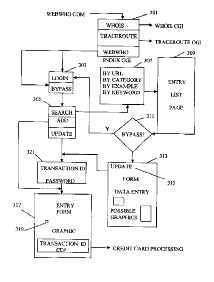 MySpace, Inc. v. Graphon Corp., Dkt. No. 2011-1149 (Fed. Cir. March 2, 2012).
MySpace, Inc. v. Graphon Corp., Dkt. No. 2011-1149 (Fed. Cir. March 2, 2012).
MySpace and Craigslist sued Graphon for declaratory judgement of non-infringement of U.S. Patent Nos. 6,324,538, 6,850,940, 7,028,034, and 7,269,591 (patents in suit). Graphon counterclaimed for patent infringement. The district court found the claims at issue in the patents in suit were invalid as either anticipated or obvious based upon a system called the Mother of all Bulletin Boards (MBB) and the Federal Circuit agreed.
User Manipulable Database Entries. The patents in suit were directed to a method and apparatus that allowed a user to create, modify, and search for a database record over a computer network. The inventors of the patents in suit claimed the prior systems, like Yahoo! directory, provided that the search engine operator rather than the users would categorize website listings. Under this system of categorization, the categorizer would miscategorize entries without user input. The inventors attempted to overcome this problem by allowing users to create and edit one or more database entries with their own text and graphics and then to create for each entry searchable categories that best matched the information in each entry.
Prior Art. Before the earliest priority date of the patents in suit, the Mother of all Bulletin Boards (MBB) was developed at the University of Colorado. The MBB allows the creation of an Internet catalogue that grew through user input without intervention from an administrator. The data in the MBB system was stored hierarchically as apposed to relationally (e.g. a relational database).
“Database” Includes Hierachical and Relational. The Federal Circuit found that the disputed claim term “database” included both hierachical and relational databases in the patents in suit. Therefore, the MBB’s use of a hieracrchical system met the claim term “database” and therefore resulted in the invalidity of the subject claims of the patents in suit. The court noted that the term “database” is generally understood to include different types of data organization systems, including hierarchical and relational systems. The court rejected Graphon’s argument that the written description and the prosecution history of the patents in suit indicate that the term database should be limited to relational database. If the term was so limited, the MBB would likely not invalid the patents in suit. The court found that the written description described features contained in multiple types of databases and therefore the term database could not be limited to relational databases.
Written Description & Reading in Limitations. The court explain that two principles on claim construction were complementary rather than competing. The first principle is that the written description is the best source for understanding the technical meaning of a claim. The second principle is that limitation from the written description cannot be read into the claims absent a clear intention by the patentee. The court explained that there are two limiting factors during claim construction–what was invented and what was claimed. A patentee can claim less than was invented, but never more than was invented. The court directed that we look to the entire patent to determine what was invented. Yet to determine what was claimed, the precise words of a claim are to be reviewed and the written description is used as an aid in understanding those words.
Address Patentable Subject Matter First? The dissent argued that before considering whether the patents in suit were invalid as obvious or anticipated, the court had a duty in the first case to determine whether the patents claimed patentable subject matter under section 101, even if the issue was not raised by the parties or the trial court. The majority rejected this approach. The majority noted the difficulty that courts had in defining the bounds of patentable subject matter. The majority stated that validity determinations under section 102, 103, 112 (anticipation, obviousness, and enablement) are the best approach to resolving most cases. These approaches avoid the search for universal truths that may be necessary when searching the bounds patentable subject matter under section 101. However, the court did not say that section 101 could never be raised first in a patent suit. Yet in first looking to sections 102, 103, and 112, the court said that questions of patent validity could be concluded in many cases without wading into the “murky morass that is section 101 jurisprudence.”